A number of challenges face the UK, not the least of which is how is Britain is to become ‘Global Britain’.
We have renewed our commitment to the defence of Europe and we must remain the bridge between Europe and the United States and Canada. However, we must look to the world beyond the continent.
This article was submitted to the UK Defence Journal by Geoffrey Roach. Please note that the opinion of the author may not necessarily reflect that of the UK Defence Journal.
Geoffrey Roach has a work background in features, publicity management and more recently digital marketing. Geoffrey advises that his interest the armed forces started with his Dad who served with Captain Johnny Walker on HMS Stork and then HMS Starling during the war, mostly in the Atlantic and the Arctic. His own own interests developed into defence and foreign affairs and he took that brief on joining the National Advisory Committee in the eighties. Geoffrey is currently a member of RUSI and SSAFA and in the process of taking up a position as leader of a policy forum advisory group.
After a gap of over fifty years, we look east of Suez. Whilst the Middle East will remain vital to our interests it is to the Indo-Pacific that we must now give our attention. The region will be the centre of the global economy for decades to come.
Moves by Britain towards an alignment with Indo-Pacific nations will inevitably bring it into political conflict with China. China is unashamedly trying to achieve hegemony over the entire region.
The treatment of the Uyghur people, slave labour, the suppression of free speech in Hong Kong and continued threats against India are just the beginning of a long list of existing tensions.
Soft power can achieve a lot.
Our historic ties to the Commonwealth through cultural links, education and language and increasing cooperation with countries like Japan and South Korea in defence, politics and trade is increasing, and free trade deals pursued. The election of President Biden and our natural friendship with the United States will allow for a more stable relationship between the UK and the USA and will hopefully lead to a free trade deal of benefit to both nations.
Hard power for Global Britain will inevitably mean the Royal Navy being at the heart of our strategy. The Queen Elizabeth Battle Group on it’s first deployment east of Suez will need to be the precursor to a regular presence in the Indo-Pacific region.

The sight of a Royal Navy Battle Group needs to become the norm.
Britain is playing catch up after an absence of many decades and needs to be seen to be committed to the region.
In peacetime it will show the flag, exercise with friendly nations and be ready to assist with natural disasters. It will gather information, it will underline rites of passage and assist commercial shipping. It could be involved in combating piracy and smuggling. A third of all global shipping passes through the South Chins Seas and over 100,000 vessels a year use the Gulf of Malaca.
Our carriers are our biggest surface asset and we must do whatever is necessary to maximise availability. We need to equip and crew both ships. Not to do so would, in peacetime, be a waste of the resources invested to date and in times of conflict foolhardy. Having both carriers active with a well balanced complement of aircraft will also allow one to be always available for UK sovereign requirements.
To achieve the aim of each carrier operating for about 200 days a year, one would be on station, the other working up, in transit and carrying out exercises and perhaps testing future equipment. A reduction in transit time and costs for all Royal Navy and RFA vessels could be achieved by forward basing, at least for maintenance facilities maybe in Australia or Singapore or even Japan.
We will also need the cooperation of our allies. The carriers, given the will to do so, can be made ready as suggested but we may not need to provide all the escorts. An open handed commitment to both our European, Indian Ocean and Pacific allies could easily see naval vessels from thesregions standing up to contribute to a joint escort force, perhaps including one or two submarines.
The United Kingdom at the heart of a truly international fleet operating in international waters.

So how do we achieve maximum capability?
A brief but important passing note, the F35A is reportedly being discussed again in RAF circles. The idea of maintaining an RAF strike force and equipping two carriers and providing a test and training element has never made sense.
The ‘A’ variant is far better suited to RAF requirements, has a significantly longer range, carries a heavier weapon load is and is far less expensive, around 25 per cent cheaper than the ‘B’ version.
Back to the Royal Navy. Whatever occurs with the RAF, the Royal Navy need around 50 to 55 F-35B airframes. Operationally the on-station carrier would operate with two squadrons each with ten F-35’s probably with another US Marine Corps squadron with another ten aircraft. Also Merlin ASW and AEW.
The second or supporting carrier would carry a nominal squadron of ten F35’s and Merlin helicopters. A fourth squadron and OCU would provide the opportunity to rotate and allow for surge situations, reinforcing the UK’s sovereign capability.
Both carriers can embark a Royal Marine Commando force. The capability to carry out an over the horizon insertion against terrorists, extremists or even criminal gang would be a considerable UK asset. Such a force will need speed and surprise.
Currently the fastest helicopters with the best combat radius are Merlin and Wildcat, the latter being able to deliver a substantial punch A composite squadron of six and four respectively seems appropriate. Longer term, the V-280 Valor or the SB1 Defiant could be considered.
The provision of an amphibious element is also a possibility. An international task force with, for example HMAS Canberra, HMS Albion, and an Izumo from Japan riding shotgun with F-35s?
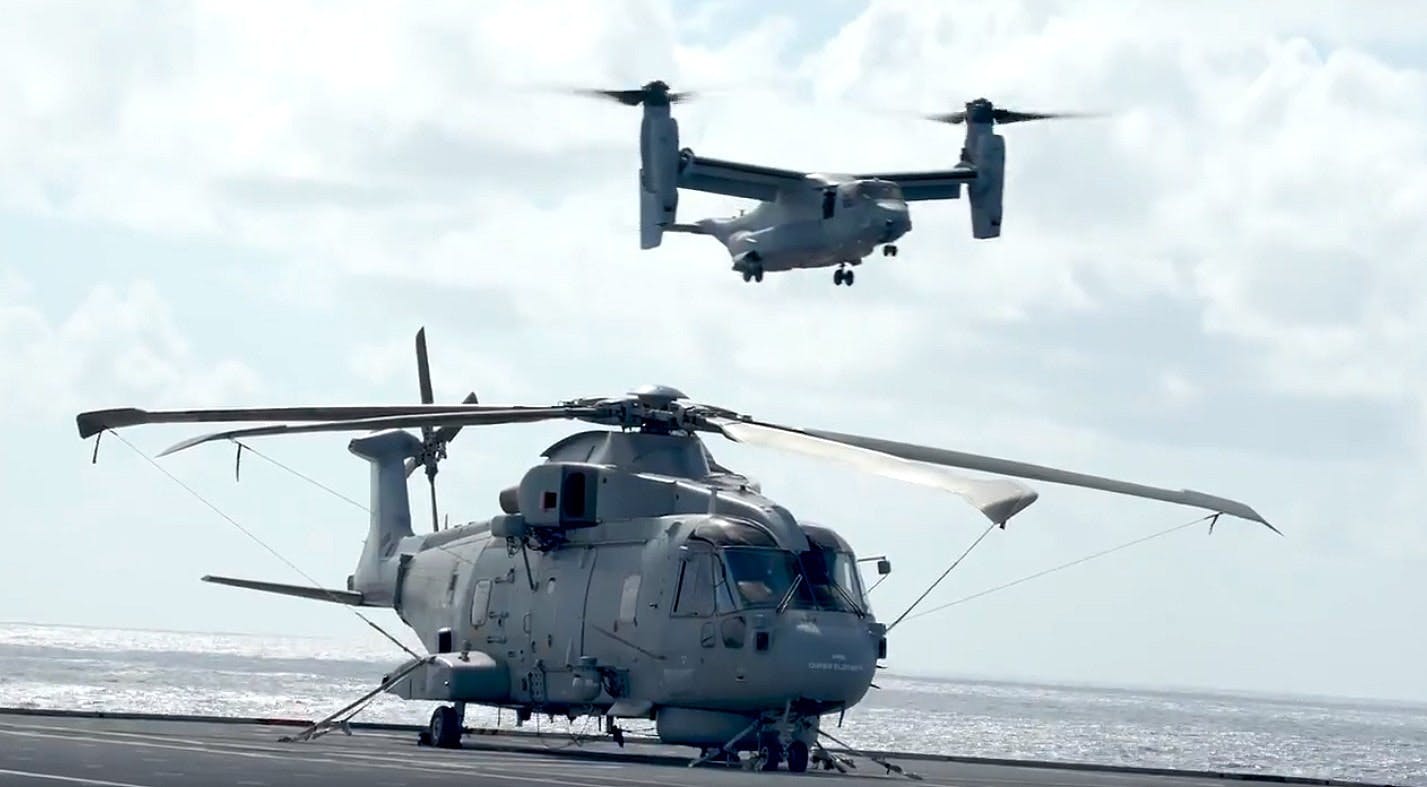
Regarding the ships themselves, the carriers are poorly defended with only three obsolescent Phalanx. Even allowing for their escorts both ships could easily be fitted with three or four 12 cell SYLVER VLS and the provision of 30mm/Martlet systems would provide defence against small craft.
The phrase ‘built for but not fitted’ is all too common. A decision to spend hundreds of millions of pounds on a warship and then try to save money by not fully arming it beggars belief. The Type 45’s must be fitted with their VLS silo’s for anti ship and land attack missiles as soon as practical and the Type 26’s must join the fleet complete.
In conclusion, the United Kingdom faces opportunities and threats alike in dangerous times. Moving towards 2030 there is much to do.
The Royal Navy is in good shape and with the right ships and the right people it will continue to be the United Kingdom’s ambassador worldwide.



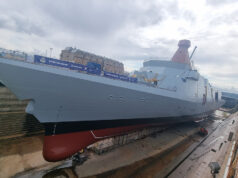


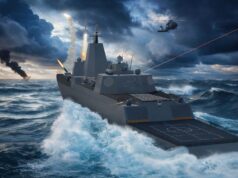
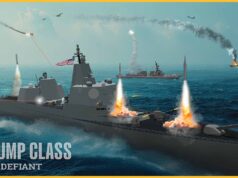
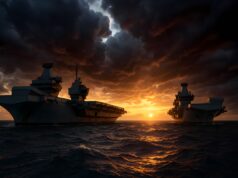
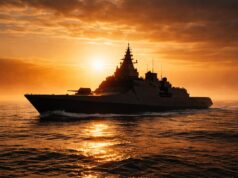



Congratulations to one of our own, again.
Excellent piece Geoffrey.
Thanks for the kind words Daniele…much appreciated.
Interesting and timely!
“Testifying before the US Senate Armed Services Committee on 9 March, Adm Davidson warned that “without a valid and convincing conventional deterrent”, China “will be emboldened to take action in the region to supplant US interests”, adding that as the military balance in the Indo-Pacific becomes “more unfavourable” to the US, “we are accumulating additional risk that may embolden our adversaries and competitors to attempt unilaterally changing the status quo”.
https://www.janes.com/defence-news/news-detail/military-balance-in-indo-pacific-region-becoming-more-unfavourable-to-us-says-adm-davidson
Fascinating think piece, cheers Geoffrey
Great article Geoffrey. Hello Daniele
Hello my friend! Sunny here…for a change. Bit nippy mind.
Well said Geoffrey good point on the Type 45
The West has made China into a monster. I have often wondered why ‘Think Tanks’ like Chatham House and RUSI have never warned about the dangers of offshoring most of our manufacturing to China. They have built up a huge trade surplus, stopped investing in American gov bonds and are now spending billions on their armed forces. PS. Even my yard broom is made in bloody China.
Quite deliberately mind. The intention was to use capitalism as a way of opening up China as it did with the USSR, but in reality it just made the ChiComs wealthy enough to be more efficient at being total bastards
They will be Paying us back big time soon !
I would like to stick my yard broom right up Xi Jinping’s proverbial!
Spot on! China was always likely to grow its economy massively once the nutcases who started the cultural Revolution died off. But that didn’t mean we had to let manufacturing shrink here: it didn’t in Germany. High electricity prices hiked because of idiotic green policies are killing what remains of our steel industry. If the next integrated review doesn’t encompass plans for energy resilience and re-shoring vital manufacturing, it will have failed.
We need Trade deals with countries like Indonesia, to get them to make our brooms!
I am becoming paranoic about Chinese electronic equipment, I must admit. This pains me as, like all of us, I try to avoid getting too sucked in by clamour. However, I was surprised that when I was sent an updated router by my phone supplier (UK) I was unable to change the chinese factory set password (a first)! Recently, I’ve purchased an endoscope wifi to view a drain blockage before repair, again chinese seems the option out there. (I’ll deactivate when finished) Again though I noted the app demanded what seemed more access to my tablet info than I thought would be warranted. Now my newish battery seems to be running down quicker whether the unit is on or off!
Whether I’m correct or not, I will avoid chinese for the more permanent usage if I can possible do so. In the meantime, I look forward to the ‘west’- by which I mean any none politburo country practicing an open international relationship – reshoring capabilties as soon as possible for peace of mind.
That said, I do credit many chinese firms would adopt a much freer trading relationship if they were ever allowed to, since all entrepreneurs are far more interested in profit than politics.
Regards
One of my Interests is the World Of Model Railways,in terms of what is Available there has never been so much Choice and Ever Rising Standards – the Downside being that most of that Choice is Produced in China.
While the West in concerned with trivia, Imperial China is rising and will have to be contended with.
There are Not enough Sylver silos on the T45s for land attack missiles. Much better to give T45 a BMD missile, and more SAM. Use another type of vessel for land attack.
Maybe, also give the carrier CAMM-ER for SAM.
I think you’ll find are covered this. The 45’s were built for but don’t have fitted 16 type 41 silo’s…..and it was SeaCeotor I had in mind for the carriers.
I think Geoffrey, if we are going add more silos for T45, it should be CAMM-ER.
A couple of points.
Slyer or any VLS on a carrier won’t let it shoot missiles. You need the radar to go with it. If you go for Viper, you will need Sampson fitted. If you go for Ceptor you will need to fit the data link domes. Added to that the Command system would need updating.
Phallanx obsolete?… No it isn’t. Its still well supported and has recently been upgraded.
Anti ship in a VLS means tomahawk for the RN which can in its latest version double up for land attack which is a very nice to have. But first they will need to buy it and fit it.
However T45 does have anti ship capability as it can be fitted with Harpoon. Don’t be supprised if all 4 escorts are equipped as Harpoon shooters on the upcoming deployment. If/ when the new interim ASM is announced my bet is Harpoon 2 with land attack capability so no need to buy VLS silos, VLS missiles etc. Just use the existing fits.
Besides me getting anal on weapon systems (they where and are my thing!) … I support everything you said!
Hi Gunbuster,
I was thinking about SeaCeptor… sylver was a slip of the brain! Regarding the AS/LA system I didn’t really want to go down a particular route, but emphasis the need to arm our ships to their full potential.Time and time again the U.K.builds ninety per cent of something and then tries to save some cash at the end.
Thanks for your support..much appreciated
Sea Ceptor is a no-brainer isn’t it. Very good local area defence, cold launched away from the deck to avoid debris and easily wired to Artisan.
Straying slightly into fantasy fleets (but trying to keep one foot on planet Earth!) i’d like to see 32 silo’s in 2 different locations for redundancy against attack and 4x 40mm systems replacing both Phalanx and the DS30’s as it looks to be an all round excellent anti-surface gun.
SeaCeoptor is good I think. Not aware of the 4X40mm ?.. or least I don’t think so…
Replacing the existing guns with 40mm’s isn’t on the radar at all, but in my view they would add a punchier anti-surface capability and should be rolled out across much more of the fleet now that they are being introduced for T31.
Easy fit on the QEs, below flight line of course, would be Bofors 40mm none deck penetrating mk4 like the T31s
I fear much of this is wishful thinking and will bump up against the reality of funding- perhaps as early as next week. If we had the means to do this after we had resourced all the capabilities needed for our own more immediate defence- comprehensive UK air defence with planes and missiles, anti submarine frigates in numbers sufficient to counter Russia, surface combatants capable of eliminating any surface threat- then fine. But we don’t. To go looking for trouble so far away when everything else has been cut to the bone seems needlessly risky. If UK had maintained a 1960 s size Far East fleet for the last 60 years, what difference would it have made?
Well said. We simply don’t have the resources for any significant permanent presence on the other side of the world. Not enough to deter China from any aggressive moves, anyway. Spreading our shrinking forces thinly around the globe seems like a dangerous distraction when we ought to be focusing on the defence of our own region.
Absolutely….. Either that or we start actually adding to our defence assets rather than Review and delete.
Perish the thought mate!
Just checked the size of our Far East fleet in 1964. 2 aircraft carriers with jets, 1 helicopter carrier, 2 County class missile destroyers, 17 destroyers,10 minesweepers and 5 submarines. Amazing.
Can’t begin to work out the cost of an equivalent force today but probably the entire RN budget!
This is the entire royal navy now.. Give or take
Apart from the other half, as per the CSG and the other eleven destroyers and frigates ;the eight Rivers and the amphibious boys;the mine hunters; the SSN’s and the SSBN’s and virtually the whole of the RFA.
We aren’t “looking for trouble”. What is it about deploying a CSG or any other warship to IndoPac that makes it so? Periodically deploying a CSG to IndoPac does demonstrate a significant and rare capability, that China or anyone else has to factor into their calculations. As such it contributes to a broad deterrence picture that goes well beyond just China.
What we care about more than war fighting is preventing conflict in the first place. A conflict in Asia would have WW devastating economic effects at a minimum and the UK certainly wouldn’t be insulated from that.
Ref your question “If UK had maintained a 1960’s size Far East fleet for the last 60 years, what difference would it have made?” – Probably none, which is perhaps why it went away in the first place. How certain are you wrt the situation in Asia over the next 60 years?
I agree GHF, we are going East, as part of a coalition of reassurance to the nations there. And to establish more economic relationships in the East.
With you all the way. it’s not just the “on station” part . Any and all ships will be seen and looked at in awe and not just by a potential foe but reassuringly by our friends.
Of course no-one can know what the next 60 years will throw up. At present, the Far East is more peaceful than for most of the 20th century, but the dominant fear is of Chinese expansionism. The key to countering this is strengthening the cooperation of countries in the region. Together these boast populations and gdp that match China. No reason why UK shouldnt help, but our priority must remain NATO. Given our commitments in the Middle East, I still think trying to have significant presence in the Far East is overreach.
I agree that NATO is the priority. We should probably define what we mean by significant presence. If it means permanent forward deployment of a significant number of assets or a carrier then that certainly doesn’t make sense. But forward deployment of one or two vessels with periodic deployments of a CSG or perhaps an amphibious group, depending on what the latter capability looks like for the UK over time, does for the reasons I’ve outlined.
The Batch 2 Rivers would no doubt constitute the most cost effective diplomacy asset on station in Asia-Pac for the UK, whilst not tying up a larger asset. As of this month, still awaiting positive detail from the RN on basing negotiations considering they must have been ongoing at some level for a while. Nice to get the IR out of the way on many issues.
I agree the B2s are fine at this time. In due course I expect the B2s to be pulled back to the UK from most deployments, to be replaced by T31s, as the B1s finally get retired.
Basing is an interesting topic. Singapore is the obvious candidate but would a Malaysian or even an Indian Andaman and Nicobar Islands naval base make more sense. Probably depends a lot on what roles are envisaged, especially wrt relationship building.
I broadly agree that tilting our priorities East of Suez (whilst not completely abandoning commitments to European security in the face of Russia) is a sensible decision given the regions increasing economic value as well as political tensions.
I completely agree with Geoffrey though that an enduring presence is what’s going to count. I share all of the concerns about the CSG being a paper tiger if it struggles to field enough escorts, aircraft and enablers – but alongside that it’s important that this years deployment isn’t a flash in the pan.
Our many allies in the region aren’t going to be impressed or become more malleable to trade and diplomacy if we cannot send a task-group out there regularly to demonstrate our capabilities and commitment to support them in upholding the rules based international order.
Even a bi-annual visit by the CSG would be advantageous – with perhaps a smaller amphibious group such as the one deployed to The Med last summer (an Albion, a Bay and a couple of escorts) doing the alternate years to keep our skin in the game.
“…doing the alternate years to keep our skin in the game.”
At least give Albion a T45/T26 escort next time!
Nice one Geoff. Though, I think the numbers of F35B are too low. We must be able to plan and produce a carrier strike group around our own aircraft and aircrew, first! As there may be an instance where the USMC are not available, due to other commitments. But as they’ve lost the USS Bonholme Richard (officially scrapped), I think for the next 3 years at least, we can pretty much guarantee their availability.
If we are now downgrading the Sqn numbers to only 10 jets rather than 12. These numbers are still feasible, but it is a massive strain on aircraft availability. The reason is the maintenance burden of the F35 and especially the B version. The B places the most strain on the F135 engine and has caused power turbine blade failure, causing the USMC to ground the fleet. Therefore, its periodic maintenance is a lot shorter than when the same engine is fitted in an A version, for example. So we have a choice, we either buy more engines so we can rotate them faster around the jets or buy more airframes to reduce the flying hours put on the engines as a whole. There is a massive backlog of engines waiting to go through Pratt & Witney at the moment. This is due to the issue of the ceramic coating on turbine blades cracking which then requires a complete blade replacement through an engine strip down.
To my mind, the FAA require a bare minimum of 60 jets. This is to allow three operational squadrons of 12 jets, plus one OCU and the remaining 12 going through scheduled maintenance. If anything I prefer at least another operational squadron of 12 jets. This would mean one carrier could have 36 jets, leaving the OCU and another squadron for surge, whilst keeping to the maintenance program with an additional 3 jets, giving a total of 75 jets.
The problem with scheduled maintenance is that depending on the length of the tour, at least some of the jets on board will need scheduled maintenance on the carrier, if they engineering manager and fleet planner hasn’t sorted it out before departure. Because the STOVL operation places a larger strain on the B’s airframe, its maintenance cycle is a lot short than the A’s. Therefore, it will be in the shed more compared to the A.
One thing you did miss though, is the recent MoD’sRFI? I really can’t see the RFI being for anything other than the carriers. It doesn’t make sense to fit a CATOBAR system to the littoral strike ship or a RFA. As the operational flexibility it can give the carriers is too bloody obvious. The specifications are designed for large UAVs and as I’ve mention before both the Tempest program have stated that the program will be fully integrated with carrier strike and F35s will integrate UAVs in their concept of operations as force multipliers and additional weapons magazines. So we will likely see the LANCA UAV being used from the carrier in support of the F35s. However, it was Vice Admiral Jerry Kidd’s comments about the Merlin/Crowsnest combination, being an interim solution that piqued my interest. The specifications are just below the max take off weight of a E2D Hawkeye. So I don’t believe we will be getting them, but I do believe we will see a future AEW UAV. The RAF/FAA are desperate for a organic airborne tanker that can be used from the carrier. The Boeing MQ25 Stingray is the ideal candidate.
The last paragraph is key IMV. A modest launch and recovery capability really opens up options for the carrier air wing. What is particularly interesting about the RFI is the rather aggressive timeframe, which suggests interest in a possible implementation perhaps well within this decade.
The E2D max weight is only 1000kg above weight limit of RFI CAT proposal. So E2D could be tanked up in the air. The Gross weight of E2D, is still 19500kg, within the limit of RFI traps.
I also think s Sea Gripon would make a good mix, if RFI comes to light, a high and low mix with F-35Bs.
Hi Davey,
No argument from me on numbers but they don’t appear to be forthcoming.The ten kite squadron is taken from the USN who are now running with this number but also to fit the extra squadron.in with limited numbers.
Fascinating this CATOBAR bolt from the blue though isn’t it. As you say, the only obvious ships are the carriers. Making allowances for maybe not knowing at the time but it’s pity we didn’t start out with them.
Again better AEW now? Hawkeye and Osprey and even Valor could have been on the order form but now a decent size UAV makes more sense.
An interesting read Geoffrey, cheers. Not deliberately be contrary but I can’t help but think that the UK could largely leave that corner of the world to others and concentrate on closer to home. That’s not to say that we would be abandoning it but if the UK had a CG operating in the North Atlantic/Med then it could free up a US one to move further east. We’re all supposed to be on the same team so while it might smooth a few egos to have a UK CG sailing round the world, big picture, we might be more productive staying closer to home. Apologies to the ships company’s that might miss out on the more exotic foreign jollies….
I agree that the US devoting more carrier capability west of the US versus east is the most likely scenario resulting from the UK carriers in combination with CdG and its replacement. However, long distance periodic deployments to Asia demonstrate a practical, rather than theoretical, capability that might be applied to any region of the world. As such it complicates potential adversaries attempting to model a western response, which helps deterrence … and no I’m not a member of the crew hoping to catch some rays in exotic locales 😉
Don’t get me wrong GHF, for all sorts of reasons the UK will be desperate to send a CG out to the Far East, while we’re allies with plenty countries and my notion above makes financial sense (I think) there will be a wish to ‘show the flag’ to allies to keep them sweet, we’re not THAT big an ally to anyone that they would see a ‘big picture’ of the UK filling gaps elsewhere, a big shiny aircraft carrier parked in the harbour with a White Ensign hanging off the back end says ‘NOTICE ME, we’re your pal too’.
a really informative piece – thanks Geoffrey, More please
The problem with adding Sea Ceptor to a carrier is that you’re adding to a layered defence against conventional threats already provided by your pickets, ASW and AAW assets, but not addressing the emerging threat of ballistic missiles, hypersonic glide vehicles and hypersonic cruise missiles that bypass most of that layered defence.
If you then decide to address that omission organically, you’re recreating an ABM AAW destroyer on the carrier, which also requires significant upgrade to the carrier radars. Far better IMV to invest in improved T45 detection capability along with CEC, the latter to obviate the need for extra Sylver or Mk41 cells on T45, so that both T45 and T26 might launch missiles against such threats, .
Do you know, I am always in two minds about the deployment to the SCS. Im totaly for the carriers and the Navy, im totaly for a strong and capable military and im totaly for using our assets to both deter a bully, and show off what is good and best of the UK and its people. I know that for a capable defence, you cannot sit back and “take it”, you have to take the initiative, pre-empt where strategicaly and tacticaly neecessary, and be able to have enough assets in place to take loses and continue! BUT….with our reduced resources being spent on the military, my main concerns is both overreach and an inability to actually take losses and continue.
While we have some outstanding kit and people, we dont have much. If we are serious about being a global player, yes we have to show the flag, support our allies and do long distance deployments, but we need to ensure we have firm and stable force to base all this on. We need to be looking at the North sea, have enough assets in place to deter, detect and if neccessary destroy any pesky russki subs as and when (god forbid) we need to. We need to provide our key and niche assets to support a landlocked Europe and NATO, and we need to be able to support and deploy to NATO flanks as we used to, and are expected to do. All this comes at a cost both finacial and militarily. In my opinion, before we go off on long, overseas deployments, we need to ensure that all these more relevent possible threats are covered before we deploy to the far east, and generaly East of Suez.
We need to delay the deployment, in order to ensure the CBG has real teeth, depth and capability. Yes we will be with allies, some of whome we will always be with, but one day someone will call our bluff, take a few, limited, tactical “pot shots”, then show up just how thin this paper tiger is, and possibly losing both good people and kit. Losing even a few assets, even one or two, will show the world we are a thin shadow of our former selves, and give the exact opposite effect that we intended. Now breath……………..Cheers all, just a rant and a worry I have.
I share a lot of your concerns Airborne, not much slack in our inventory and we lack the ability to quickly replace equipment if lost. Its where we are I guess, we’re going for quality over quantity, just a pity that we seem unable to work with European allies to build warships and keep production lines running longer term.
I think part of the reason for ‘for but not with’ is that missiles that aren’t used need to be maintained and, eventually replaced. Given that it’s not uncommon for modern missiles to cost ~£1 million each, I can understand why a decision would be made not to fit them if the international security situation suggested that they would just be gathering dust. But then these decisions need to be promptly reviewed if the situation deteriorates- which I think it’s fair to say it has.
1 million each….thats cheap!
Tomahawk is around 2.5 Mil + the launch canister etc for sub use Viper probably around 3 Mil.
Ceptor should be around 500k I guess which is a bit more than seawolf CL was at 250K for GWS 25 and around 500k for VL GWS 26.
Could be worse…USN Standards start at around 2.5mil and rapidly increase with Standard 6 coming in at a whopping 4.5 mil
GB, I seen the figure for SM3 at $45M per POP!
Ahhh the ABM version in its latest guise… Looks nack all like a standard missile of old. It’s a big rocket shaped like a traditional rocket…max diameter to fit in a Mk 41 and to carry the max amount of propulsive power.
Nice if you can afford it
I think it needs to be shown that regular large scale deployments East of Suez actually provides GB with some unique advantages for doing so. It will, of course, add to regional security but this is a shared benefit that helps everyone so we’ll just be spending proportionately more than, say, our European competitors for the same gains. I don’t like the idea of doing things for the sake of kudos. Kudos is very short lived and very quickly forgotten or tossed aside.
I do have a sense of national pride over the RN’s planned deployment East of Suez and I do hope that this can be mixed with some practical reasons for us being there.
Just re.- read the NAO report to make sure I have really understood it. Setting aside some of the detail, the powerful message that comes across is that the equipment plan is not slightly unaffordable but massively so. Assumptions about future efficiency savings are seen as unrealistically optimistic in the light of past outturns.
The costs of all major equipment continue to rise much faster than general inflation meaning the situation will only get worse.
Since the equipment plan now takes up more than 42% of the entire budget, tackling the problem is essential but incredibly difficult.
Assuming that manpower remains at broadly current levels, the options are less equipment or cheaper equipment.
In 2021 values, a1964 Leander frigate cost amounts to@£80.. The type31s, which most posters on this site agree is underarmed are now estimated to cost nearer £400m then £250 m.each.
We aren’t alone: Canada’s budget for type 26 is now £3b per ship.
Are there areas where cheaper options might suffice? Should we use Typhoon to launch Brimstone at insurgents? Do we really need to spend perhaps £1.2 b to upgrade 150 tanks?
I don’t know but I now understand what’s behind all the leaked stories of major cuts.
£80m.At£80 I’d buy one for the MOD!
A moment to say thank you for everyone’s interest and support. It’s a great site and good to be able to air your thoughts in good company.
Geoffrey, some random thoughts in no particular order…
Firstly I do think it is appropriate for the UK to share with the US the leadership role in maintaining the so called rules based order ( in the South China Sea). We are respected by friends in the region, allies and by potential adversaries.
Secondly, we are very, very stretched. Forward basing is working for us and types like River 2 and Type 31 enable us to have a visible constabulary presence. But to my knowledge we do not have the use of a useful airfield in the region of the SCS. So an aircraft carrier, and hence its support group is the asset we need.
Thirdly, China is a massive economic and military power. The carrier task force needs to be strong enough to force a passage if necessary but not in my opinion overtly offensive. AShM yes, Tomahawks no. China must be constrained until it matures and accepts western values. This may take several decades.
Fourthly, I am concerned that we do no neglect the Atlantic and Africa ( where China is very active). I anticipate us sharing the load a lot with France and the US and with Korea, Japan and Australia.
Fifthly, as regards weapons I think the only urgent item ( for the planned deployment) is either Harpoon Block II or NSM. Aster is best is class. Sea Ceptor is also very good. Type 23, Merlin and Astute are best in class. Its good that USS Sullivans will be part of the task force. Cheers.
Hi Paul’
I do, of course, agree with your first points. If the U.K. is to try to maintain a place of influence financially and politically it has to be seen working for the interests of all in the region and that’s what the carriers provide.
The land attack missiles are a problem and I do have mixed feelings myself. Are they a warning against attack or an invitation to a long range strike?
In a world of “we can’t do everything” i see our main role in the North Atlantic and Arctic, involving the navy and the air force and continuing to build on relationships with our partners in the Joint Expeditionary Force. To be honest Iv’e not given much thought militarily to Africa, beyond our own activities in the likes of Kenya and Nigeria and the little we do helping out the French in Chad and Mali. Beyond that I don’t see the UK. going much further.
Interesting view but slightly flawed in my opinion. You say ‘whatever happens with the RAF’ but the RN is not going to get 55 F-35B to use. It is intended to be a joint force and so the RAF tasking requirement will need to be taken into account. I think that precludes operating 2 carriers at the same time, and certainly not each for 200 days per year. There are probably not enough Merlins to go round either. I would love to see an all FAA force of F-35s and a bigger and stronger RN but there isn’t the budget yet and probably never will be.
The carriers just need sufficient aircraft and escorts to be viable UK assets abroad.